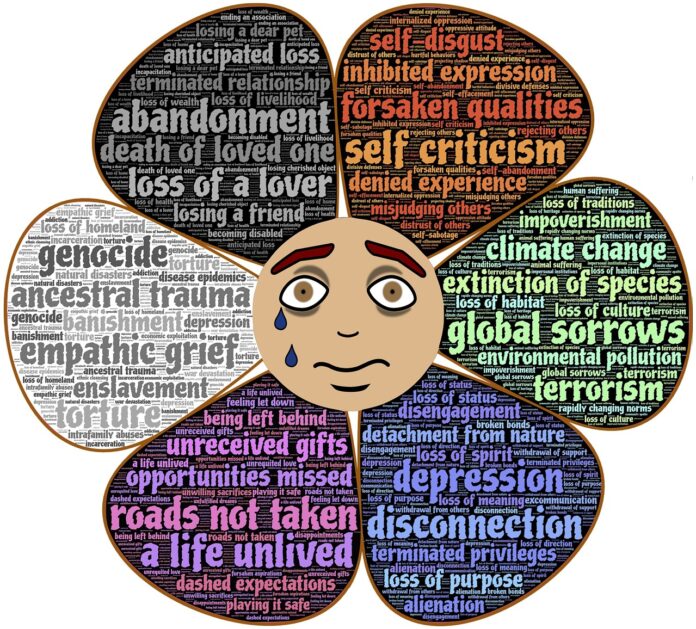Trauma is encoded first in the body, as sensations or raw emotions. Over time, and with the acquisition of language, those sensations attach themselves to a narrative. Narratives are stories that explain the emotions. Common narratives are variations of fears of, anger toward, sadness about, and desire for. For example, a common narrative might be, “I am sad because I got rejected.” Over many experiences, the feeling-narrative pairing becomes a reflex, which responds to situations in the environment or even to our own thoughts.
Such narratives become part of one’s character. And in fact, they are so reflexive that the individual may misinterpret events in their environment, according to a preexisting narrative. An example may be that a friend is preoccupied, and we interpret this as a sign of rejection, and feel depressed over being deserted.
It is as if we have a hard drive. On that hard drive are stored our feeling narratives. When a situation comes about that is associated by the mind with a past particular traumatic event, then all experiences similar are activated and we feel the accumulated weight of our past and present. We may misinterpret; we may overreact.
Often the response of the person is so strong, a clinician will label the response(s) a pathology. In respect to trauma, clinicians isolate two primary symptoms.
1) Intrusion: Intrusion occurs when the individual experiences unwarranted memories or “flashbacks” to past traumas. Memories flood our mind, accompanied by strong feelings, usually fear. We may also dream of the trauma, and panic. A great example is the Tom Cruise movie, “Born on the Fourth of July.” Cruise plays a war veteran wounded in Vietnam. He attends a parade and when a firecracker goes off, he panics, as it triggers memories of his wound by gunfire.
2) Avoidance: People will structure their lives to avoid further trauma. In my clinical career I have seen numerous instances of people severely injured in auto accidents. Subsequently they avoided driving a car, and in several cases they became agoraphobic, or housebound. They feared leaving their house, emotionally convinced that they would be injured if they ventured out.
Buddhist Psychology views trauma differently from traditional Western Clinical Psychology. In Buddhism, the ideal mental state is one that flows effortlessly from experience to experience. Furthermore, the mind is equanimous, responding to all experiences in an emotionally even-handed way. Whether a situation is desirable or undesirable, the mind processes it with the same unbiased clarity and calm.
Periodically the mind gets stuck, it closes down. The even flow is disrupted, and we experience unease. Buddhists label this a shenpa, a type of attachment or sticking point. The Buddhist Monk, Pema Chodrun, calls this, “getting hooked.” We feel a tightening, a tensing and a closing down. This then flows into narratives of blame, anger, jealousy or self-reproach, or other words and actions that Chodrun says “poisons us.”
Western psychology looks at traumas as a set of symptoms or a syndrome. A medical model aims to cure or eliminate the syndrome.
In contrast, Buddhism sees the world one moment at a time, so it advocates certain practices that get us past the traumatic moment, with clarity, cam and centeredness.
In Trauma III, I will discuss techniques of coping with trauma.











